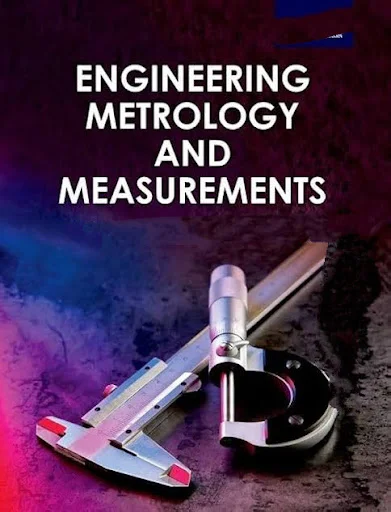A Comprehensive Book on Engineering Metrology and Measurements : An Approach to Include Relevant Contents !
Part 1: Fundamentals of Metrology
- Introduction to Engineering Metrology:
- Definition and scope of metrology
- Importance in manufacturing and quality control
- Basic measurement systems and their components (measurand, measuring instrument, scale, error)
- Units and Standards of Measurement:
- International System of Units (SI)
- Primary and secondary standards
- Traceability concept
- Measurement Errors and Uncertainties:
- Types of errors (random, systematic, gross)
- Error analysis and propagation
- Uncertainty calculation and expression
- Limits, Fits, and Tolerances:
- Basic concepts of limits, fits, and tolerances
- Tolerance zones and their application in design
- Geometric tolerances (straightness, flatness, parallelism)
Part 2: Linear and Angular Measurements
- Linear Measurement Techniques:
- Vernier calipers
- Micrometers
- Dial gauges
- Slip gauges (gauge blocks)
- Surface plates and V-blocks
- Angular Measurement Techniques:
- Sine bars
- Autocollimator
- Optical comparators
- Advanced Linear Measurement Techniques:
- Laser interferometry
- Eddy current measurement
Part 3: Mechanical and Electrical Measurements
- Measurement of Force and Torque:
- Load cells
- Torque wrenches
- Measurement of Surface Roughness:
- Profilometer
- Stylus profilometry
- Measurement of Temperature:
- Thermocouples
- Resistance Temperature Detectors (RTDs)
- Measurement of Pressure:
- Pressure gauges
- Piezoelectric transducers
Part 4: Advanced Metrology Techniques
- Coordinate Measuring Machines (CMMs):
- Probe-based CMMs
- Non-contact scanning techniques
- Optical Metrology:
- Holography
- Laser scanning
- Digital Image Processing and Metrology:
- Image analysis techniques
- Nanometrology:
- Atomic Force Microscopy (AFM)
- Scanning Probe Microscopy (SPM)
Key Considerations for Including Content:
- Balance between theory and practical applications:Ensure the book covers theoretical concepts with relevant real-world examples and case studies.
- Clear explanations and illustrations:Use diagrams, photographs, and detailed explanations to facilitate understanding.
- Problem-solving approach:Include solved numerical problems and practice questions for each topic.
- Current trends and technologies:Discuss emerging areas like 3D printing metrology, smart sensors, and data analysis in metrology.
- Laboratory exercises:If applicable, consider including a section with detailed laboratory experiments for hands-on learning

Comments
Post a Comment
"Thank you for seeking advice on your career journey! Our team is dedicated to providing personalized guidance on education and success. Please share your specific questions or concerns, and we'll assist you in navigating the path to a fulfilling and successful career."